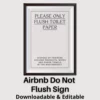Introduction:
When it comes to Airbnb hosting, it’s essential to keep the bookings rolling in year-round. While high seasons often result in a flurry of reservations, navigating the slow season can be a challenge.
However, with the right strategies in place, you can ensure your property remains in demand even during these less busy periods. In this comprehensive guide, we will explore effective strategies to maximize bookings and profits during the Airbnb slow season.
Key Points to Remember
Before we delve into the strategies, let’s establish some key points that will serve as the foundation for your success in the slow season:
Year-Round Attention: Effective slow season strategies require year-round dedication and planning. Don’t wait until the slow season hits to start thinking about it.
Multifaceted Approach: A winning strategy involves multiple techniques applied to various aspects of your Airbnb listing. This includes pricing, listing titles, nightly minimums, and calendar availability.
Pricing Flexibility: Be prepared to adjust your pricing significantly during the slow season. You might need to lower your rates more than you think to attract bookings.
Now, let’s dive into the strategies that will help you thrive during the Airbnb slow season.
Section 1: The Importance of a Customized Pricing Strategy
1.1 Customized Slow Season Pricing
One common mistake among hosts is neglecting the need for an annual slow season pricing strategy. Many hosts simply lower their rates when they realize the slow season has already begun. However, a more effective approach is to plan your pricing strategy well in advance.
Example: Imagine you’re a host in a coastal town, and your slow season is during the winter months. Instead of waiting until December to adjust your prices, plan your slow season pricing strategy in August to capture early bookings.
1.2 Benefits of Effective Slow Season Pricing
Why is it crucial to have a well-thought-out slow season pricing strategy? Here are some significant benefits:
Consistent Bookings: A carefully planned strategy ensures a steady flow of bookings even during the slow season, helping you maintain a reliable income throughout the year.
Competitive Advantage: By implementing effective strategies, you set yourself above your competition, making your property more appealing to potential guests.
Now that we understand the importance of a customized slow season pricing strategy let’s move on to specific Airbnb slow season strategies.

Section 2: Airbnb Slow Season Strategies
2.1 Adding “Discount” to Your Airbnb Title
Your listing title plays a crucial role in attracting potential guests. During the slow season, consider adding verbiage like ‘Extra 10% Discount’ to your title. This strategy is rarely used but can make your listing stand out.
Example: If a guest has already narrowed down their options based on budget, seeing an extra discount in your title can be the deciding factor that leads them to click on your listing.
Be sure to specify the details of this discount in your listing description. While this strategy may require you to send a special offer manually, it can be highly effective.
2.2 Offering a ‘Friends + Family’ Airbnb Discount
To increase bookings during the slow season, consider implementing an automated system that sends a message to past guests a week after their check-out. In this message, offer them an additional X% discount for their next stay and encourage them to refer friends and family.
Example: If a guest had a great experience at your property during their summer vacation, they might be inclined to return during the slow season and bring along friends or family members.
You can get creative with this discount by offering it for specific conditions like midweek stays, stays of four days or longer, or visits during particular months.
2.3 Increasing Percentage Discounts
One of the most effective ways to attract bookings during the slow season is by lowering your prices significantly. Airbnb rewards hosts who decrease their prices with improved search rankings.
Example: If you typically offer a week-long stay with a 10-20% discount, consider increasing it to 20-40% during the slow season. To fine-tune your strategy, research your local competitors and aim to offer even better discounts.
2.4 Adjusting Your Airbnb Pricing Hack
If you’re already following a pricing strategy outlined in Chapter 8: Pricing Hack For More Views, adapting it for the slow season is relatively straightforward. Reevaluate your average pricing, which tends to be lower during the slow season, and set your ‘Base price’ on Airbnb to be approximately 10% lower.
Example: If your base price during the high season is $150, consider lowering it to $135 during the slow season. This adjustment aligns with the reduced demand for your property during these months.

2.5 Calendar Availability Adjustments
Your calendar’s availability settings can significantly impact your bookings. Here’s a strategic approach to adjust your calendar for the slow season:
Open your calendar for bookings up to 12 months in advance at the beginning of the busy season. This allows you to capture guests who plan well ahead.
Gradually reduce your calendar availability: Three months later, adjust it to nine months and then further to six months as the slow season approaches. This strategy enables guests to book for the next year’s slow season when price maximization is less critical than maintaining a high occupancy rate.
Example: By having your calendar open for bookings up to six months in advance during the slow season, you can secure early reservations from forward-thinking guests.
2.6 Removing Extra Person Charges
During the slow season, it’s a good idea to remove extra person charges. While these charges can be an aggressive pricing strategy during high season, they can deter potential guests when demand is lower.
Example: If you’re hosting a property with a maximum occupancy of four guests, consider removing extra person charges during the slow season. This makes your listing more attractive to smaller groups or couples looking for a getaway.
However, it’s advisable to add a significant extra person charge for guests exceeding your maximum occupancy. This not only incentivizes guests to adhere to your occupancy limits but also allows Airbnb to charge guests accordingly if they exceed the limit.
2.7 Lower Minimum Night Requirements
In general, it’s recommended to have a one-night minimum stay year-round. However, if you typically have a minimum stay requirement of two nights or more, the slow season is an excellent time to test a one-night minimum, especially on weekdays.
Example: While you might prefer longer stays, consider the slow season as an opportunity to accommodate travelers looking for shorter getaways, even if it’s just for a night or two. Most cleaning services will be willing to handle the additional workload.
It’s worth noting that you can use your cleaning fee to deter single-night reservations. By increasing the cleaning fee slightly for shorter stays, you can offset any potential revenue loss.
2.8 Lowering Your Nightly Rate
This strategy may seem obvious, but it’s essential to emphasize the importance of lowering your nightly rate during the slow season. Hotels, professionals in the hospitality industry, often decrease their prices by up to 40% during these periods.
Example: If your property’s nightly rate during the high season is $200, consider lowering it to $120 or even $100 during the slow season. While this may seem like a significant reduction, it’s necessary to attract guests during this less busy time.
The key to determining your minimum acceptable price is understanding both your fixed costs (expenses that are incurred regardless of whether a guest stays or not, such as rent or mortgage) and variable costs (expenses incurred only when guests are present, like electricity).
Example: Let’s say your fixed costs are $80 per night, and your variable costs are $20 per night. To make a profit and cover your expenses, your minimum price should be at least $100.
Remember, your minimum price should reflect what you’re willing to accept for a reservation that allows you to profit, rather than leaving your property vacant.
Section 3: Conclusion
In conclusion, mastering the Airbnb slow season is a critical skill that separates the professionals from the amateurs in the hosting world. To recap, here’s what you should focus on in order of importance:
Lower your nightly rate up to 40%+ during the slow season to attract cost-conscious guests.
Adjust your calendar availability strategically to encourage early bookings during the slow season.
Modify your base price within Airbnb by following the Airbnb pricing hack.
Increase your percentage discounts based on your competitors’ rates.
Remove extra person charges to make your listing more appealing.
Lower minimum nights to one to accommodate shorter stays.
Consider adding the word ‘Discount’ to the beginning of your listing title to grab attention.
Offer a ‘Friends + Family’ Airbnb discount to incentivize past guests to return and refer others.
By implementing these strategies, you’ll be well-prepared to navigate the slow season successfully, ensuring your Airbnb property remains a lucrative venture throughout the year.
For additional insights and information on managing the slow season, you can also refer to Airbnb’s recommendations.
You may also like to read;









